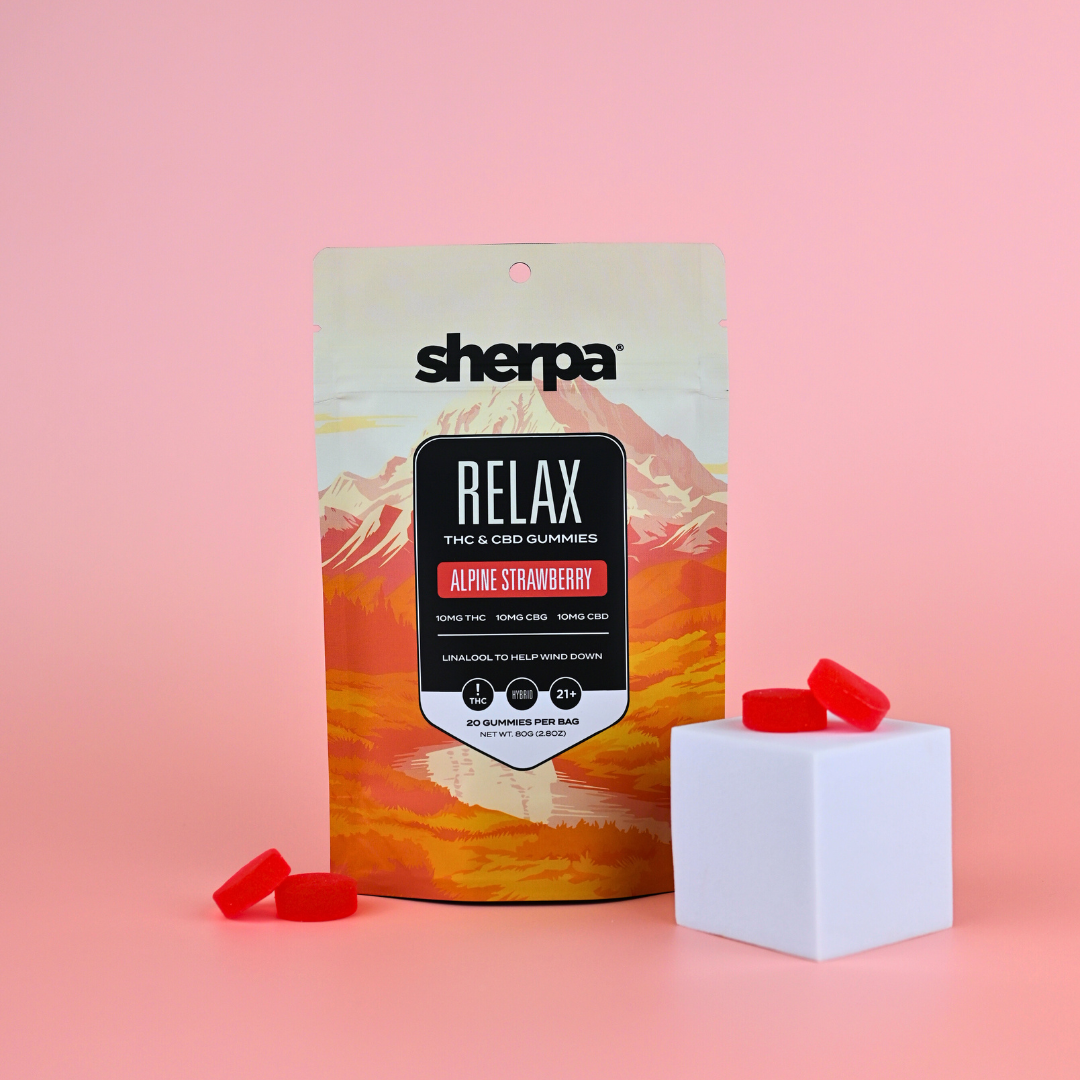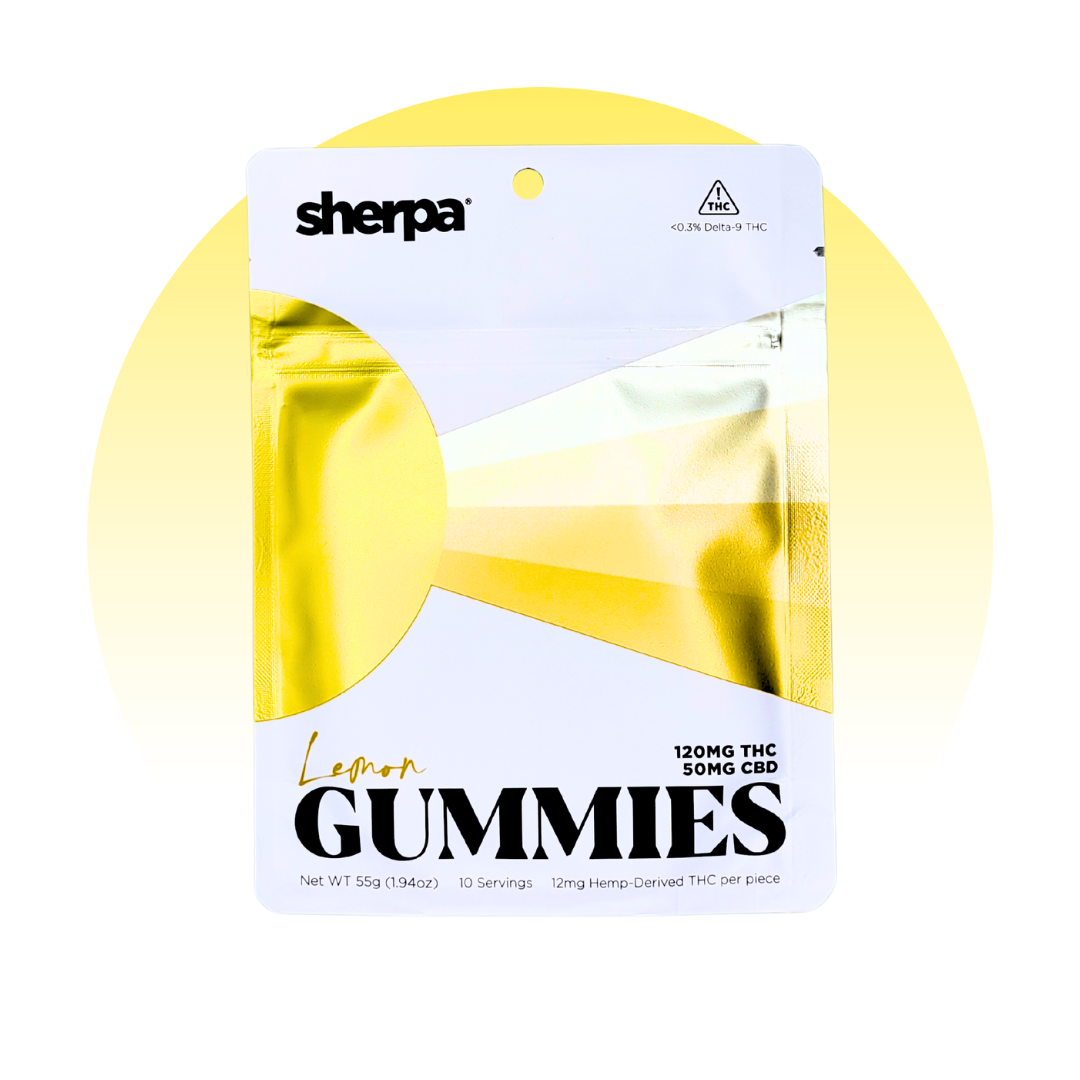
Our Blog
What Is The Difference Between THCA And THCP?
What Is The Difference Between THCA And THCP?
If you've been shopping around for the perfect cannabis gummy, you've likely waded through the alphabet soup of cannabinoid ingredients. THC-A, THC-P, CBD, CBN, CBG and so on and so forth.
It can certainly get confusing. What cannabinoids do you want, exactly? Which ones are natural? What are the effects, and are they beneficial?
Don't worry — we're here to demystify all of that, starting with two THC variants that are currently in the spotlight, THC-A and THC-P. Before we get there though, we have to take a second to get on the same page about Cannabinoids in general.
Understanding Cannabinoids
We promise we won't get too deep into the botany, anatomy, or physiology weeds here. The main thing to understand is that cannabinoids are the active compounds found in cannabis plants that interact with the body's endocannabinoid system, a complex network of receptors and neurotransmitters responsible for the effects that consuming cannabis can have — from altering perceptions and increasing your appetite to reducing inflammation and mitigating stress.
One of the most well-known cannabinoids is tetrahydrocannabinol, or THC for short. THC is the primary psychoactive component known for producing the "high" associated with cannabis use. It binds to CB1 receptors in the brain, primarily affecting mood, perception, and pain.
Cannabis contains numerous other cannabinoids, each with unique properties and potential effects, but for now, we're going to be focused on some THC variants specifically. So let's get right into it, shall we?
What is THC-A?
We'll give you the layman's explanation and then give a little more detail for the chemistry majors in the back. Simply put, THC-A is what turns into the THC that we commonly associate with cannabis. It's non-psychoactive, meaning it won't make you high when consumed.
Now for a little deeper dive. THC-A is found in the plant's trichomes, where it plays a crucial role in its chemical composition. It's converted into THC — specifically Delta-9 THC — through a process called decarboxylation, which occurs when cannabis is heated. That can be through smoking, vaping, or cooking. Heating it up removes a carboxyl group from THC-A, transforming it into the psychoactive compound we're more familiar with. That transformation is essential for folks looking to get the typical effects of cannabis — that "high" feeling — but THC-A itself has garnered interest in recent years for its potential therapeutic benefits.
Now something to keep in mind before we move on: THC-A has been banned in Arkansas, Idaho, Minnesota, Oregon, Rhode Island, and most recently, Georgia. Several other states are looking to follow suit in a pursuit — misguided or not — to ban "synthetic" cannabinoids. It looks like THC-A is in a lot of politician's sights, and its availability might nosedive in the next few years.
How Is THC-A Used?
If you see an edible with THC-A, it's usually medicinal and formulated to achieve some specific, non-recreational goal like better sleep or pain management. Since it's not psychoactive, THC-A is appealing to folks looking to get the benefits of THC without the intoxicating effects. Some people get THC-A by consuming raw cannabis, like in salads or smoothies, but others opt for the edible route, where extracted THC-A is added to gummies, candies, capsules, or tinctures. Simply put, THC-A is a way to get the good stuff from THC without the high.
Got it? Great. Now let's move on to THC-P.
What is THC-P?
Tetrahydrocannabiphorol, or THC-P for short, is a relatively recent discovery in the world of cannabinoids. First identified in 2019 by a team of Italian researchers, THCP is a naturally occurring compound found in cannabis, though in much smaller quantities compared to run-of-the-mill THC or another cannabinoid you might have heard of, CBD.
Structurally, THC-P is similar to THC but with a notable difference — a longer alkyl side chain. This structural change helps THC-P to bind more effectively to the CB1 receptors in the endocannabinoid system, which, if you remember, are responsible for the psychoactive effects of cannabis. As a result, THC-P is believed to be significantly more potent than THC — up to 30 times stronger in fact.
Due to its high potency, THC-P may produce more intense effects, including heightened euphoria, altered perception, and increased psychoactive bordering on psychedelic experiences. That said, research on THC-P is still in its early stages, and its full range of effects, benefits, and potential risks are not yet really understood.
So why are we hearing so much about it? Let's take a look.
How is THC-P Used?
A lot of cannabis product manufacturers are slapping "THC-P" on their labels, making it sound like their products are going to be insanely powerful. Some of them actually are, but a lot are just using the name power of THC-P to push products that are mostly THC blends because they're a lot easier and cheaper to produce. That's why it's always really important to check the labels of any cannabis products you're thinking about consuming. At Sherpa, we test all of our products in-house before shipping them off to a lab for independent confirmation that our calculations are correct.
That said, THC-P can be thought of as a shot of grain alcohol if regular Delta-9 THC is a beer. They're both going to make you intoxicated, but it takes a lot less of one to get the job done compared to the other.
A Word of Advice on THC Variants
If you're new to the world of edible cannabis, you need to pay close attention to the label of the product you're considering. One of the most important factors in determining what your overall experience will be is the THC content. Newer users want to stick to the 2mg to 12mg range, and more experienced users can start ratcheting things up. But you also need to pay attention to the type of THC that's being used. If it has 25mg of THC-A, you're not really going to feel much of anything. If it has 25mg of THC-P, you're probably going to start reading your cat's thoughts.
Understanding the Legality of THC and its Variants
"What a minute," you might be saying to yourself. "I thought this was illegal."
Prior to 2018, you'd be right. But the 2018 Farm Bill changed all of that. Essentially, it made a clear distinction between what is considered hemp — legal to cultivate and produce — and marijuana — still federally illegal. If your cannabis plant has less than 0.3 percent THC content by dry weight, it's perfectly legal. If it has more, then it's no longer legal.
All of our products are formulated using derivatives and isolates from hemp plants, which means they are all federally legal to possess and consume. No need to worry about getting a knock on the door or anything like that.
Now that you know you're in the clear legally speaking, let's talk about some tips for consuming these products to make sure you enjoy your experience as much as possible.
Tips for Taking THC Edibles
If you're new to the world of edibles and want to better understand how THC can benefit you, here are some practical tips to help make sure you have a pleasant experience.
Start with a Low Dose
Start with a small dose of THC. If you're brand new to this, 5mg should do it. If you're a little more experienced, maybe 10mg. Remember that the effects of edibles can be a little more intense and longer-lasting than smoked cannabis. Starting low helps you gauge your tolerance and avoid overconsumption.
Be Patient
Edibles take longer to take effect, usually between 30 minutes to two hours. It's important to wait patiently and resist the urge to consume more too soon. That's a classic mistake that will almost always lead to accidental overconsumption if you don't give the initial dose enough time to take effect.
Read the Label
Like we said above, always check the packaging for dosage information and instructions. Edibles can vary pretty widely in terms of potency and serving sizes, so understanding how much THC — and what type — is in each piece can help you manage your intake more effectively.
Eat Beforehand and Stay Hydrated
Consuming edibles on an empty stomach can sometimes intensify their effects. Eating a light meal or a snack beforehand can help moderate the impact and provide a more balanced experience. Also keep your water bottle nearby. Edibles can sometimes cause dry mouth, so staying hydrated can help you feel more comfortable.
Choose a Comfortable Setting
If you're still testing things out, make sure you're in a familiar place and relaxing environment. Being in a comfortable setting can help you manage any potential anxiety or discomfort. If you start feeling overwhelmed, find a quiet, comfortable space to relax, drink some water, have a snack, and remember that the effects will eventually wear off.
Ready to give it a shot? Great! We're excited to accompany you on this journey. Here are a few recommendations to get you started.
Sherpa Recommendations
If you're here to have a powerful THC experience, we'd recommend our 50mg brownie bites or our 100mg gummies. These are both precisely formulated with the experienced user in mind looking for a recreational good time.
If you're more into testing the waters a bit though, we didn't forget about you. Our 2mg THC tablets are a great way to get some of the benefits of THC without feeling a lot of psychoactive effects. If you want something mild but still manageable, our 12mg gummies are a great middle-of-the-road option. Perfect for winding down at the end of the day or elevating your social encounters a little.
Regardless of what you choose though, just make sure you're consuming cannabis in a responsible way. Don't overdo it, and please, don't ever get behind the wheel. Remember, there's nothing out there that's more important than being safe.





